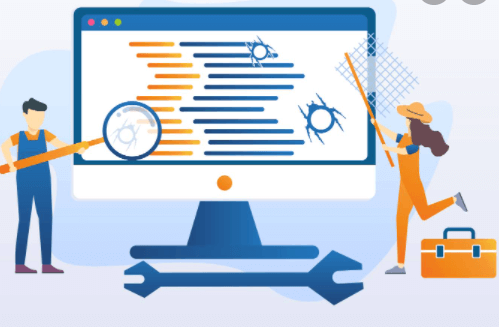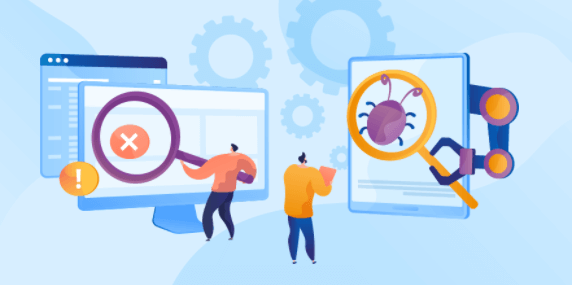Table of Contents
Manual Testing Importance and Guide: Quality means not only freedom from defects but also the complete fulfillment of customer and user requirements. To meet the needs, quality assurance is our top priority. For this reason, manual quality assurance is an integral part of our implementation. Diceus is one of the best companies that can provide you manual software testing services.
Manual Testing Is An Integral Part Of The Implementation.
Systematic and continuous testing is an integral part of our development process in every phase of a project. The procedure in 5 stages has proven itself for us.
After receiving a new requirement, the basis for a qualitative implementation is already prepared by an extensive requirement analysis by developers and QA software testers.
The developer test ensures that the finished performance is handed over to our QA software testers as error-free as possible. These finally check the implementation in full for the fulfillment of the acceptance criteria and non-predictable side effects.
This is followed by handover to our customers, their quality acceptance, and joint live tests. Experience shows that this increases the quality of the end product and increases the speed of development.
Our QA software testers are an integral part of our development team to detect errors and anomalies in operation at an early stage.
Based on the requirements analysis, the test scenarios and test types are planned in test processes for the final quality assurance.
Depending on the requirements, manual quality assurance is supplemented by component, integration, and system tests. During development, the developers use these test scenarios for their developer tests.
This means that it is possible to find errors at an early stage and develop quick and agile solutions at any time. The result is significantly faster customer acceptance and increased quality.
To ensure quality in agile processes, we usually work with an agile coach and also use test automation and manual quality assurance at different levels.
Read Also: insurance software development Pros and Cons
Different Types Of Manual Testing For Different Scenarios
The focus and goals of testing vary from test level to test level during the software development process. Accordingly, different types of tests are used with different intensities.
Functional test
This test type subsumes all test methods using which a test object’s externally visible input and output behavior are tested. Functional requirements serve as a test basis or reference for the target behavior.
They specify the behavior that the system or system parts must provide. They describe “what” the (sub) system should do. Their implementation is a prerequisite for the system to be able to be used at all.
Non-functional test
Non-functional requirements describe attributes of the functional behavior, i.e., “how well” or with what quality the (sub) system should perform its function. Their implementation strongly influences how satisfied users are with the product and how happy they use it.
Read Also:Best web development tools for beginners
Structure related test
Structure-related testing is based on the internal structure or architecture of the software. For example, the control flow within components and the call hierarchy of procedures or menu structures are analyzed.
The system of abstract models of the software can also serve as a starting point. The aim here is to achieve or cover as many elements of the system under consideration as possible through tests.
For this purpose, a sufficient number of suitable test cases must be designed. Structural tests are mainly used in component and integration tests, sometimes also as a supplement in higher test levels (e.g., to cover menu structures).
Read Also:Difference between Artificial intelligence and Machine Learning
Change-related test
Parts of existing software are changed, or new software modules are added through error correction and maintenance work and further development.
It must be proven by suitable repetition of tests that the previous errors have been corrected as intended (an error confirmation test) and that the changes have no unintended side effects (regression tests).
Read Also: 7 Common Website Design Mistakes You Must Avoid
During implementation, we test in the latest versions of the most popular browsers as standard. If the possibility exists, the tracking data of the customer’s existing website is viewed even before the offer is prepared to identify the browser and end devices used.
If tracking is not available, it may make sense to include it in a preliminary project to specify the requirements. Here we work closely with our customers to get an optimal picture of the conditions.
If no user numbers are available, we focus on the browsers with the most significant distribution in the respective region.
In the best case, we test natively – i.e., on your computer with a browser installed there. This best reflects the actual use case.
Read Also:Rank website using Responsive web design services
If the desired browser is not available on the computer, a virtual machine can test. In this way, various native browsers can be opened, even if they have not been installed on your computer.
This is particularly useful for manual testing compatibility with older browser versions. In addition. It can also use a virtual machine to simulate different performance levels in RAM and processors for the end-user.
The Browsers tack tool can also be used if required. This provides numerous browsers on various platforms on which. Can test both public and local web offers. Here is the more good service by DICEUS https://diceus.com/derp-accounting-software/.




![1000 Girl Attitude Names for Truecaller ID | UPDATED [Included Boys Names] 1000 Attitude Names for Girls on Truecaller](https://edutechbuddy.com/wp-content/uploads/2025/05/ChatGPT-Image-May-21-2025-11_59_39-PM-1-150x150.png)








![1000 Girl Attitude Names for Truecaller ID | UPDATED [Included Boys Names] 9 1000 Attitude Names for Girls on Truecaller](https://edutechbuddy.com/wp-content/uploads/2025/05/ChatGPT-Image-May-21-2025-11_59_39-PM-1.png)